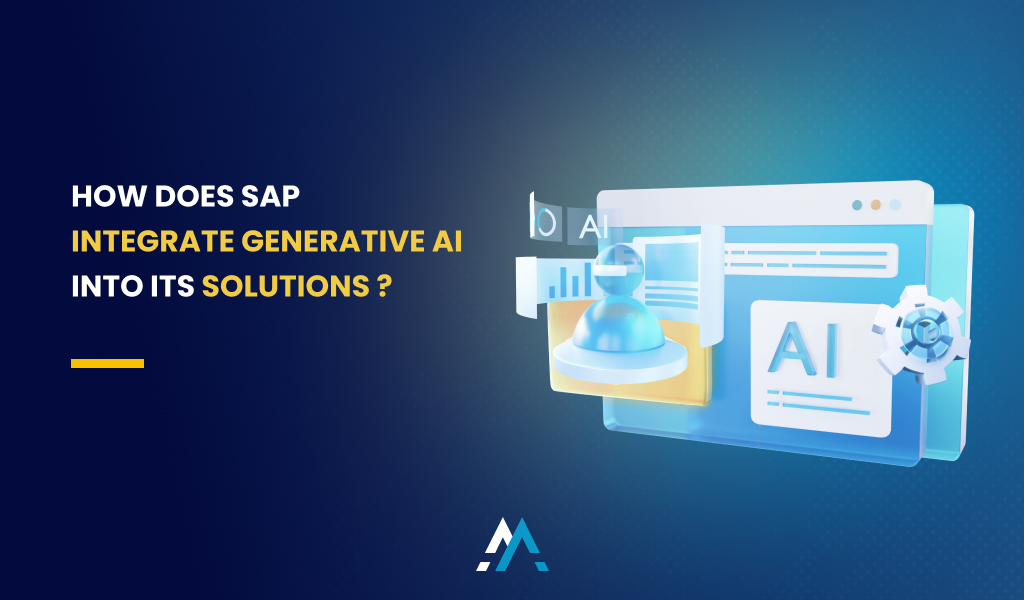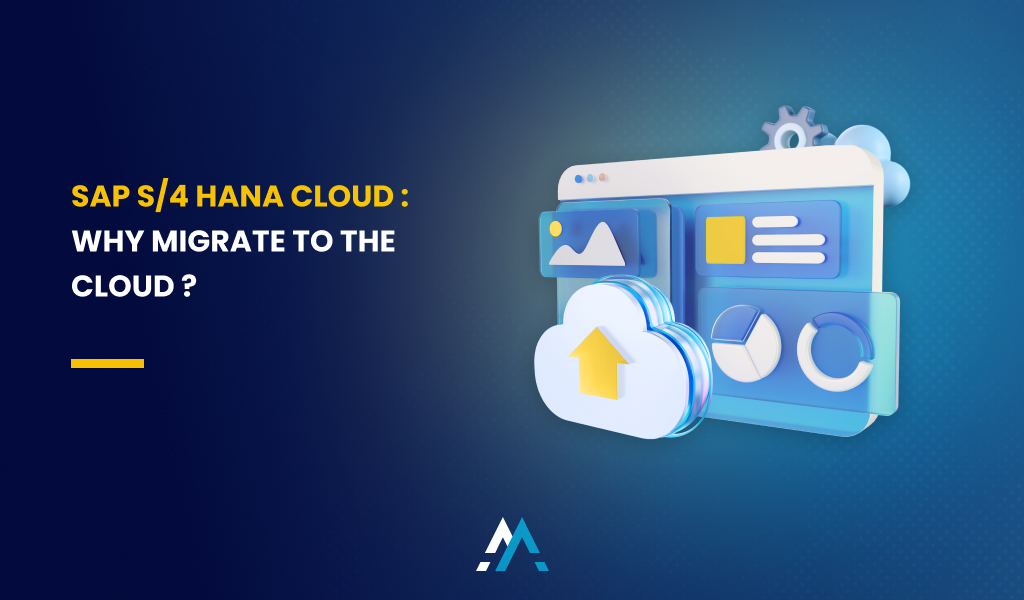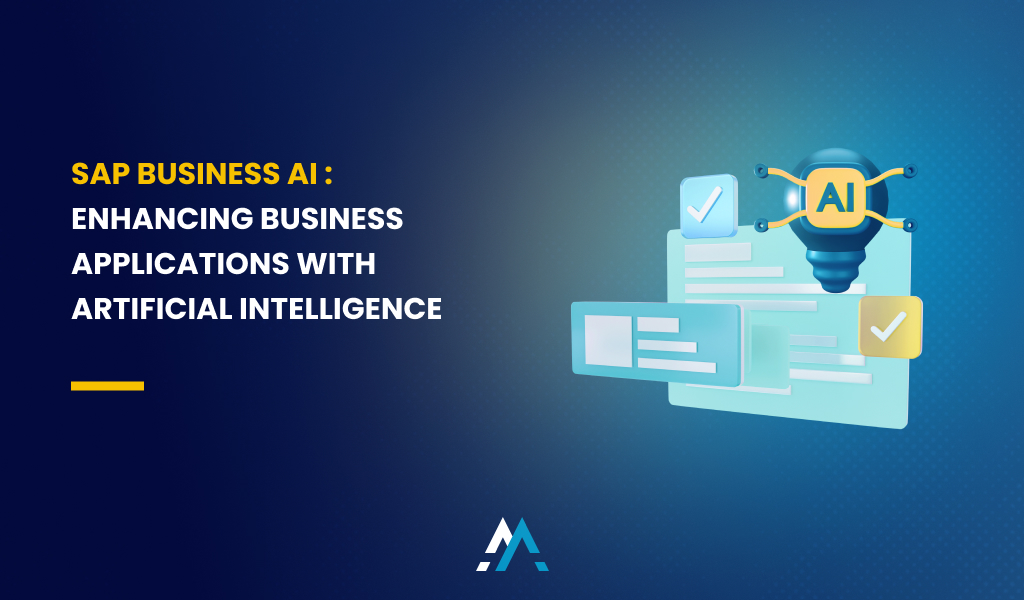At a TechED conference, German software publisher SAP unveiled new developments including the integration of generative AI into more than 130 applications, now available on the SAP Business Technology Platform (BTP). Aimed primarily at SAP developers, these applications are designed to boost adoption of the BTP platform by deploying a diverse range of features and solutions that leverage generative AI.
In this article we will explore the rise of generative AI in a fast-moving market by demonstrating some concrete examples of use cases. We will highlight the main SAP applications that use generative AI to optimise business processes and improve operational efficiency. We will also examine the impact of generative AI on the SAP ecosystem and its role in the evolution of enterprise software solutions.
Generative AI: an increasingly evolving market
The generative AI market is growing quickly. According to research carried out by Sopra Steria Next, this market is expected to grow tenfold between now and 2028. According to these forecasts, this sector could reach around 100 billion dollars, demonstrating an annual growth rate of 65%.
Against this dynamic backdrop, generative AI has been significantly integrated into a number of tools. These include ChatGPT, Character AI, BARD, Poe AI, and Quillbot.
Here’s a quick overview of their enterprise uses:
ChatGPT:
is a conversational agent that uses artificial intelligence to interact with its users, enabling it to understand and answer questions using natural language in a fluid and contextual manner.
Character AI:
is a chatbot service based on a neural language model, capable of generating human-like text responses and participating in a contextual conversation in a fluid manner.
Gemini:
presents itself as a versatile chatbot, a competitor to Chat GPT and produced by Google, offering the ability to generate text, translate between different languages, write various types of content, and many other functions.
Poe AI:
a chatbot platform developed by Quora, offering access to some of the best conversational chatbots such as ChatGPT, Claude and Sage.
QuillBot:
is an AI-powered writing tool, offering paraphrasing, summarising, and spell-checking features to improve the quality and clarity of texts.
Github Copilot:
a collaborative AI solution for generating lines of code and proposing entire functions. The aim is to improve developer productivity and make it easier to learn code.
This technology can be applied to a variety of use cases, thanks to its ability to cover and improve several areas of activity. Here are a few concrete examples of use cases:
Customer service:
Generative AI increases the rate of self-service through virtual assistants, while boosting the efficiency of contact centre operators in handling customer requests. It also fosters a proactive sales initiative by leveraging interactions to bounce back effectively.
Content and copywriting:
Generative AI facilitates the creation of more personalised content for each medium, improves audience segmentation, and enhances keyword strategy, particularly on voice search engines.
Simplified development:
Generative AI brings significant improvements at different stages of the development lifecycle. It facilitates the generation and revision of new code, as well as the improvement of existing code by detecting errors, proposing optimisations and refactoring.
Virtual assistant:
Its usefulness extends to a variety of tasks thanks to its ability to facilitate email management, respond to and translate messages instantly, provide accurate summaries for better time management and many other utilities.
We can see that the rise of generative AI is becoming increasingly widespread, being applied to a variety of tools and business areas. German software publisher SAP has also integrated this technology into numerous solutions. This use represents a significant advance in the optimisation of operations, demonstrating SAP’s ongoing commitment to technological innovation to meet the evolving needs of various business sectors.
Which SAP solutions use generative AI?
SAP Build Code
SAP Build Code is a platform inspired by GitHub’s CoPilot, designed to simplify the process of developing code scripts using generative AI. This development environment facilitates the creation and management of applications written in Java, JavaScript, TypeScript or using the CAP (Cloud Application Programming Model) framework.
The tool has a number of key features, including tutorials and templates for seamlessly integrating applications into SAP environments such as S/4 HANA Cloud or SAPUI5, as well as non-SAP environments.
In addition, SAP Build Code integrates the Joule co-driver, which offers functionalities for generating or suggesting data models, application logic, code annotations, synthetic data and test scripts. This further simplifies the development process.
SAP is bringing together all the elements needed to make applications created with SAP Build Code interoperable with Build Apps components, including SAP Build Process Automation RPA bots, as well as with ABAP code, the core engine of ERP.
AI Foundation
Generative AI is also being integrated into SAP applications through the AI Foundation, which aims to bring together ready-to-use services such as pre-trained and re-trained models. As Juergen Mueller pointed out, this initiative aims to offer solutions for document processing and recommendations, particularly in the field of translation. The Generative AI Hub, announced to be available from December, will provide access to state-of-the-art language models (LLMs) from the BTP, specifically in the context of SAP. This service will include prompt engineering tools for testing models and orchestrating different LLMs in processes. In addition, the gen AI hub gives developers access to various LLMs from different vendors, enriching the AI development ecosystem within SAP applications.
Assisting ABAP code development with generative AI
SAP is rolling out new generative AI functionality to support developers in the creation of ABAP code. This initiative includes the provision of a library of prompts specifically designed to support developers in building applications using the ABAP Cloud development model. This library will make it possible to integrate unit tests and corresponding data. Developers will be able to use these prompts to explain, review and resolve potential issues in existing ABAP code, while modernising and optimising traditional ABAP code for the ABAP Cloud environment.
Integration of a vector engine within SAP HANA
The integration of a vector engine within SAP HANA aims to eliminate the need for companies to deploy separate vector databases for their generative AI applications. This initiative capitalises on the fact that companies already have their most critical data stored in SAP HANA. This is of crucial importance, as Juergen Mueller (SAP Executive Board Member for Technology and Innovation) points out, because today’s large language models are frozen in time, not taking into account the latest data or the specificities of each company. Traditional search engines can only provide answers based on keywords, without integrating more general concepts, as highlighted by Le Monde Informatique. By integrating this vector engine within SAP HANA, companies will have their data up to date, facilitating access to relevant and up-to-date information, essential for enriching the context of financial data, the supply chain, logistics and customer experience, as Mueller points out. The integration therefore aims to provide more context and accuracy, exploiting the wealth of data already present within SAP HANA to power generative AI applications.
SAP’s integration of generative AI into its applications demonstrates its quest for continuous evolution. This approach aims to effectively address challenges and meet specific customer needs while optimising, simplifying processes and much more.


